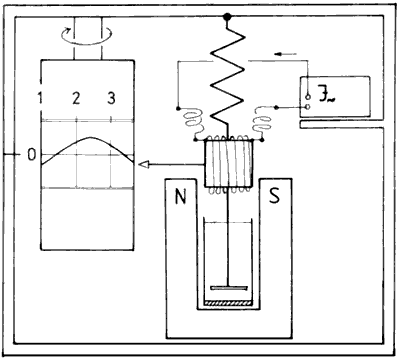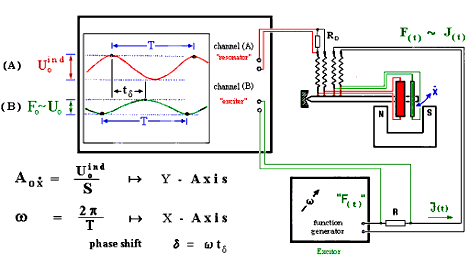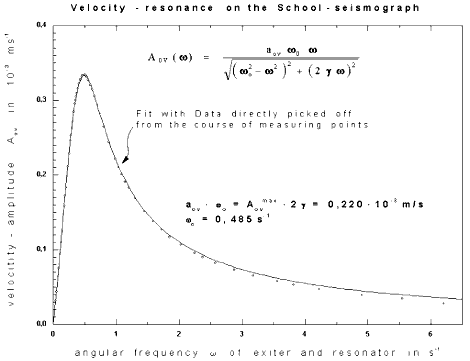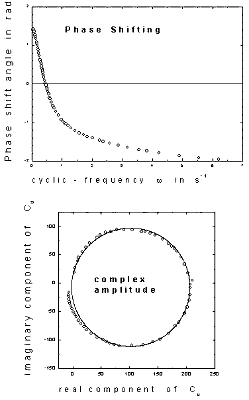7. The seismograph as a teaching object - topic: oscillations and waves
Some experimental results are meant to illustrate how a seismograph can help in teaching lessons on the topic 'oscillations and waves'.
First of all it is a real improvement to separately coil some hundreds of windings around the induction- coil of the seismograph as a supplementary coil. Then you connect the supplementary coil to an AC-generator for low frequencies. Then the pendulum is no longer set in motion in the laboratory by a periodically guided motion of the suspension (with the help of an eccentric) but by a periodically variable force, which directly acts on the pendulum.
If one registers the motion of the pendulum by the seismometer coil then you can observe resonance of velocity caused by this kind of guided motion. The advantage of velocity-resonance is that a maximum velocity can be observed for every damping value.
The following illustration shows the result of this resonance experiment.
Additionally the phase ellipse can be very clearly shown. If one goes on further evaluation such resonance can produce the following graphs for phase shifting and complex amplitude Cov.



